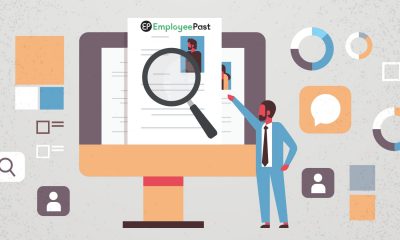If you’re new to the remote work culture, you’ll need to pick up new abilities like remote team cooperation and virtual communication via virtual team communication technologies. Aside from the new skills you’ll need to master your existing skills.
Another problem for remote employees is maintaining motivation and productivity while working from home and learning how to avoid burnout. So, here are a few pointers to assist you in managing your time while working remotely:
Creating a task schedule for the team
Creating a clear timetable and task list with your peers is one of the easiest methods to manage your time and remain on top of responsibilities while working from home.
A variety of team communication and project management tools are available to assist you in prioritising tasks, seeing what everyone is working on, and setting deadlines. Many people are concerned about how their team members will interact. You may concentrate on your work without worrying about project timescales if you have clear priorities and a work schedule.
Saying “No” is a skill that should be learned
People in the office are more aware of which projects you are already working on because you are all in the same space. As a result, they are unlikely to keep throwing fresh requests at you if they know you are busy. When you work from home, though, your coworkers may be unaware of your workload. Even if you’re already overburdened, this can lead to different team members asking for feedback.
Choose a tool that allows you to share updates on your current workload with your team. Then, before requesting assistance, your team can check on your present workload and assess your availability. Of course, if you’re still getting requests for advice, you’ll need to learn to say “no.” Next time you’re asked to do something that you can’t do because of your current workload, respectfully decline and explain that you don’t have the time to complete the task.
Creating a daily schedule that is unique to you
When they are not in an office atmosphere, some people find it difficult to motivate themselves in the morning. Create a separate workplace at home, travel to a coffee shop, or work in a co-working environment to solve this problem. However, regardless of where you choose to centre yourself, creating a personal task list is a terrific way to start your day and avoid wasting too much time staring at a blank screen, unsure of where to begin.
When you don’t have your coworkers nearby to serve as a concrete reminder of what needs to be done, making a daily plan allows you to know exactly what to focus on as you start your day.
This is an excellent practice to follow regardless of where you work, but explicitly detailing all of your tasks in this way can be very helpful for those who work from home.
Set goals for yourself and reward yourself when you meet them
If you and your team have agreed on a task list, you most likely already have specified timeframes to meet. Setting mini-deadlines for different phases of a task and rewarding yourself when you meet them is an excellent approach to stay motivated.
You can build smaller project deadlines around other small rewards and more significant project deadlines around larger rewards, such as holidays. In the workplace, rewards could include going out for a long lunch with coworkers or after-work cocktails.
These experiences can become so routine that you don’t even consider the benefits. It’s also crucial to reward yourself when you work from home.
Keep track of your time
Another useful approach of self-management is time tracking, which tracks how you spend your working hours. When you use time monitoring tools and software, you’ll be able to see exactly how long each task takes and manage your time accordingly.
You can also see what your team members are working on, which helps with transparency. Examining the data might help you spot flaws in your time management and figure out how to execute projects and chores more efficiently.
Time monitoring is essential for remote employees who want to enhance their productivity and self-management abilities because recording your progress is the only way to improve it.
Learn how to turn off your computer at the end of the day
When working remotely, self-management challenges aren’t necessarily about procrastination or a lack of drive. It’d be that you’re simply finding it more challenging to turn off. Setting down a clear work schedule with your team, as previously indicated, is beneficial for time management. But it also entails figuring out how to conclude your workday.
Turn off your notifications and log out of any work-related applications on your computer after you’ve decided to call it a day. This way, you won’t be bothered during your time by incoming emails or work inquiries.
Conclusion
Self-management must always be your priority, even when you are remote working. Following these tips, you will surely be able to do it efficiently to benefit yourself.


 Performance3 years ago
Performance3 years ago
 Performance3 years ago
Performance3 years ago
 Employee Life Cycle3 years ago
Employee Life Cycle3 years ago
 Recruitment3 years ago
Recruitment3 years ago
 Performance3 years ago
Performance3 years ago
 Performance3 years ago
Performance3 years ago
 Recruitment3 years ago
Recruitment3 years ago
 Recruitment3 years ago
Recruitment3 years ago






